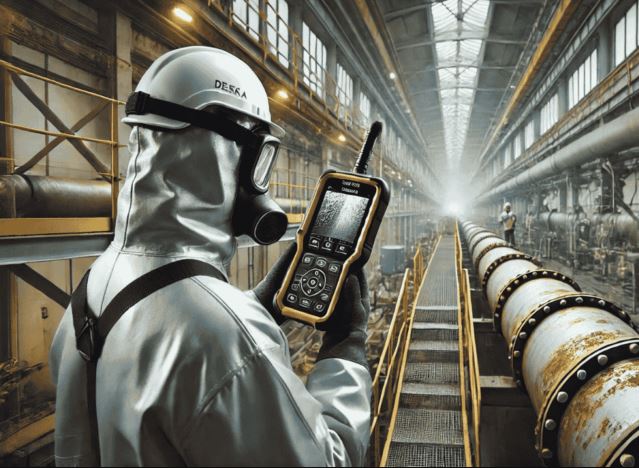Pitting corrosion is a localized form of corrosion that leads to the formation of small, deep holes, or pits, on metal surfaces. In VT1000 Pitting, pitting can occur on various metal components exposed to harsh environments. This type of corrosion is particularly dangerous because it can go unnoticed until significant damage has occurred, potentially compromising structural integrity and leading to equipment failure.
Causes of Pitting Corrosion in VT1000 Pitting
Several factors contribute to pitting corrosion in VT1000 Pitting:
- Environmental Factors: Exposure to chloride ions, lack of oxygen in specific areas, and the presence of corrosive chemicals can initiate pitting.
- Material Susceptibility: Certain metals used in VT1000 components may be more prone to pitting due to their chemical composition and microstructure.
- Protective Coating Failures: Damage or degradation of protective coatings can expose underlying metal surfaces to corrosive agents, leading to pitting.
Preventing Pitting Corrosion
Implementing effective prevention strategies is crucial to extend the lifespan of VT1000 Pitting:
- Material Selection: Choosing corrosion-resistant materials can reduce the likelihood of pitting.
- Protective Coatings: Applying and maintaining high-quality coatings can shield metal surfaces from corrosive environments.
- Environmental Control: Regulating exposure to corrosive agents, such as controlling humidity and reducing contact with chlorides, can mitigate pitting risks.
Detecting and Addressing Pitting Corrosion
Early detection of pitting is essential to prevent severe damage. The VT1000 Pitting is an advanced imaging and inspection tool specifically designed to identify, analyze, and report pitting corrosion. It combines high-resolution imaging, advanced lighting systems, and automated analysis to provide detailed images and measurements of pits on metal surfaces.
Applications of the VT1000 Pitting
The versatility of the VT1000 Pitting makes it indispensable across various industries:
- Oil and Gas Industry: Pipelines, storage tanks, and other equipment are exposed to corrosive substances. The DEKRA VT1000 helps detect early signs of pitting, preventing leaks and ensuring operational safety.
- Aerospace Sector: Aircraft components, especially those made of aluminum alloys, are prone to pitting. Regular inspections with the DEKRA VT1000 ensure that critical parts remain in optimal condition.
- Marine Industry: Ships, submarines, and offshore platforms are constantly exposed to saltwater, which accelerates pitting. The DEKRA VT1000 aids in assessing the condition of hulls and other metal structures.
- Automotive Industry: Vehicle components like chassis and engine parts can suffer from pitting due to exposure to moisture and road salts. Using the VT1000 Pitting ensures these parts remain safe and functional.
Benefits of the VT1000 Pitting
Investing in the VT1000 Pitting offers numerous advantages:
- Early Detection: Identifying pitting corrosion at an early stage allows for timely repairs, reducing the risk of catastrophic failures.
- Accurate Measurements: The device provides precise data on the size, depth, and density of pits, enabling targeted maintenance efforts.
- Improved Safety: By ensuring the integrity of metal components, the DEKRA VT1000 enhances overall operational safety in industries where failures can have dire consequences.
- Cost Savings: Addressing corrosion issues early reduces the need for expensive replacements and unplanned downtime.
Conclusion
Pitting corrosion poses a significant threat to the integrity and performance of VT1000 Pitting. Understanding its causes, implementing preventive measures, and utilizing advanced detection tools like the VT1000 Pitting are essential steps to mitigate risks associated with pitting. By adopting these strategies, industries can enhance equipment longevity, ensure safety, and achieve cost savings through proactive maintenance.
Frequently Asked Questions
What is pitting corrosion?
Pitting corrosion is a localized form of corrosion that leads to the formation of small, deep holes, or pits, on metal surfaces.
Why is pitting corrosion dangerous?
Pitting corrosion can go unnoticed until significant damage has occurred, potentially compromising structural integrity and leading to equipment failure.
How can pitting corrosion be prevented?
Preventive measures include selecting corrosion-resistant materials, applying protective coatings, and controlling exposure to corrosive environments.
What is the VT1000 Pitting?
The VT1000 Pitting is an advanced imaging and inspection tool designed to identify, analyze, and report pitting corrosion on metal surfaces.
Which industries benefit from using the VT1000 Pitting?
Industries such as oil and gas, aerospace, marine, and automotive benefit from using the VT1000 Pitting for detecting and addressing pitting corrosion.




